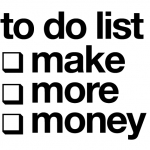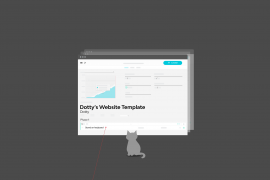One of the many highlights of the recent Jacky Winter Gives You The Business seminar in Sydney was a session with Bianca Bramham on Managing Client Expectations. Bianca had some great advice on how to create harmonious relationships with clients. Here are our key takeaways.
1. Define the brief
When taking a brief from a client it’s your responsibility to ask questions and clarify it. Where possible take the brief in person or over the phone, never via email. Speaking with a client allows you to build a rapport and Bianca says, “it will help minimise the risk of misunderstandings.” Once you’ve taken the brief make sure you relay it back to the client. This is your chance to work out any misunderstandings, but also it shows the client that you’ve heard what they’ve asked for, you’ve gained their trust.
2. Define the scope
Be clear with what is involved to complete the brief, in particular make sure you cover the specific conditions around your estimate. How may revisions are included? What are your payment and cancellation terms? Most importantly, put it all in writing and get the client to provide written approval. You don’t want to do all the work and be out of pocket.
3. Define the process
There’s a chance the person you are dealing with has no idea how long things take in the creative process. Spell it out for them by guiding them through your process and how long each step will take. Bianca calls it “bringing your client on a journey of your creative process.” By doing this they become part of the process and it will be a much more harmonious relationship going forward.
4. Define the schedule
When defining the schedule it’s important to not only think about how much time you need to complete the job but also how much time the client may need to get you feedback and approval. Discuss this with your client and be clear about what you need from them. Remember your client is just as busy as you are. Once you’ve completed the schedule, go through all the key dates and make sure they are comfortable meeting their deadlines. This gives them accountability.
Other things to help the process run more smoothly:
• Communicate what can and can’t be changed once you move onto the next stage.
• Ask for consolidated feedback, there’s nothing worse than getting feedback in dribs and drabs. If there is more than one stakeholder, tell the client you require all the feedback at once.
Communication is key to managing client expectations. Be clear and upfront and you’ll have a better, more collaborative working relationship with your client. Bianca summed it up best when she said, “by investing in time upfront, you give yourself the space and the freedom to do what you do best.” We couldn’t agree more.







